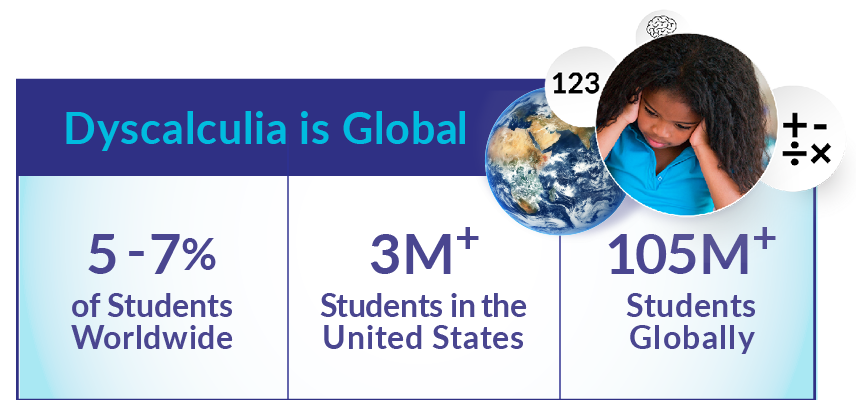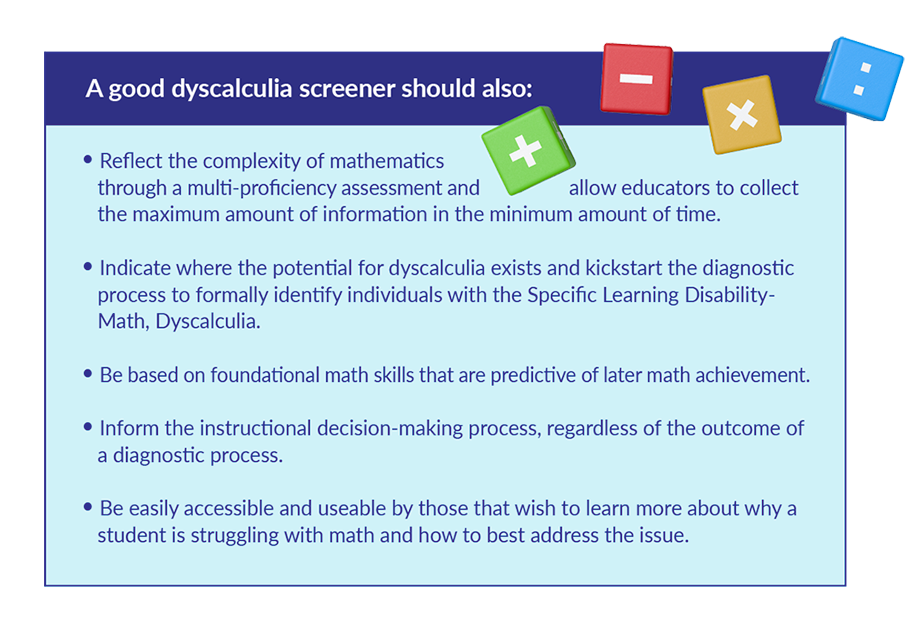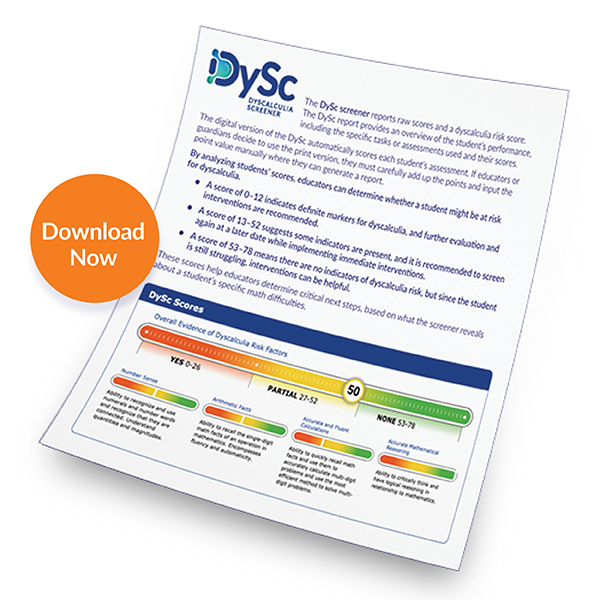Unlocking Dyscalculia: How to Screen for this Different Learning Ability
This blog is an excerpt from How to Identify, Screen, and Support Students with Dyscalculia, a summarization of The Transformative Potential of Early Screening for Dyscalculia, The Discounted Specific Learning Disability by Dr. Sandra Elliott and Sam Wertheim, Doctoral Candidate.

Screening for Dyscalculia
Research shows that identifying dyscalculia is critical to helping students get the support they need for math success. By using screeners, or quick assessments, educators can “shortlist” students who might need further evaluation to determine if they qualify for a dyscalculia diagnosis.
A good screener can identify children at risk who may require further testing and possibly a formal diagnosis of dyscalculia. However, screeners are not comprehensive evaluations and should not be used to make a definitive dyscalculia diagnosis. Screeners, as well as observational information, should be collected in a short survey, decreasing the chances that indicators are overlooked and also providing additional information if a formal evaluation is undertaken.
By identifying potential difficulties early on, screeners can help educators start the diagnostic process and make instructional decisions, regardless of the assessment outcome. They should be accessible and easy to use for educators and caregivers.

How and Why TouchMath’s Dyscalculia Screener Works
We applied the latest research when we designed the TouchMath Dyscalculia Screener (DySc) in order to identify difficulties in the specific areas of math that can indicate a risk of dyscalculia. The DySc is available for use with students and consists of a questionnaire for students, a survey for educators/caregivers, and a report that provides actionable suggestions for next steps and evidence-based interventions.
The DySc tool includes 16 to 39 age-appropriate questions in four categories aimed to identify dyscalculia traits without asking math questions that may be too advanced for a student’s age. The screener can be used to assess three distinct age groups, ages 3–4 years, 5–7 years (pre-kindergarten to second grade), and ages 8 years and above, including adults.
These include questions in the following domains:
- Number Sense: Students are asked to identify the quantity of dots and provide the corresponding number quickly and accurately in a series of problems. This helps us understand their ability to recognize and understand numerical quantities.
- Memorizing Arithmetic Facts: The DySc assesses how well students can memorize and use basic arithmetic facts. They are given a series of addition, subtraction, and multiplication problems to solve. The problems start with single-digit numbers and progress to more complex calculations.
- Accurate and Fluent Calculations: Being able to make accurate and quick calculations is essential to mastering mathematics and is an area of struggle for those with dyscalculia. In the DySc, students solve addition, subtraction, multiplication, and division problems. The difficulty level of each problem increases gradually, with the division problems being the most challenging.
- Reasoning and Problem Solving: Mathematical reasoning requires understanding concepts and applying them to solve different types of problems. In the DySc, students tackle problems that require them to solve for missing numbers and make number pattern predictions.
Scoring the DySc: Analyzing the Results
The DySc screener reports raw scores and a dyscalculia risk score. The DySc report provides an overview of the student’s performance, including the specific tasks or assessments used and their scores.
The digital version of the DySc automatically scores each student’s assessment. If educators or guardians decide to use the print version, they must carefully add up the points and input the point value manually where they can generate a report.
By analyzing students’ scores, educators can determine whether a student might be at risk for dyscalculia.
- A score of 0–12 indicates definite markers for dyscalculia, and further evaluation and interventions are recommended.
- A score of 13–52 suggests some indicators are present, and it is recommended to screen again at a later date while implementing immediate interventions.
- A score of 53–78 means there are no indicators of dyscalculia risk, but since the student is still struggling, interventions can be helpful.
These scores help educators determine critical next steps, based on what the screener reveals about a student’s specific math difficulties.
About TouchMath
TouchMath is an evidence-based, multi-sensory approach to mathematics that can help students when other Math learning solutions fail. If a student suffers from dyscalculia, they can still succeed in mathematics — and we have the resources to support you so you can better support them.
- Our Dyscalculia 101 page is your one-stop-shop for all things dyscalculia.
- Checkout our dyscalculia workshop sessions.
- Access our free dyscalculia screening tool.
We’re changing the way students experience math. Ready to talk interventions?

